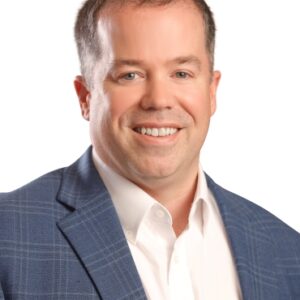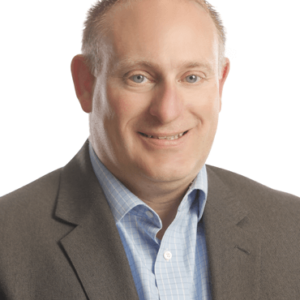Over the past two years, two of New York State’s largest and most impactful nonprofit child welfare organizations have been working towards a strategic alliance that aims to better serve over 11,000 families with the help of more than 1,100 dedicated staff members. Together for Youth (formerly Berkshire Farm Center and Services for Youth) and The House of the Good Shepherd have joined forces under a new parent company, Stronger Communities NY. This partnership, while preserving the unique identities of both organizations, seeks to consolidate administrative services and maximize strategic planning to benefit the organizations and the families they serve.


But how did this collaboration come to be? We spoke with Brian Parchesky, CEO of Together for Youth, and Brian McKee, CEO of The House of the Good Shepherd—both seasoned leaders in the child welfare sector. Their conversation shed light on the strategic steps taken to build this alliance and the forward-thinking progress they are making.
-
How did you meet? What were your initial thoughts on the idea of the organizations coming together?
“Brian (Parchesky) and I have known each other for 25 years,” said Brian McKee. “He was working in a group home when I was a caseworker.” Over the years, the two Brians, as they are affectionately known, forged a close professional relationship. Their careers led them to different organizations, but as they rose to leadership positions, they continued to exchange ideas and experiences.
Parchesky shared that he became interested in implementing a Treatment Foster Care Oregon (TFCO) program. “The program focused on providing intensive, individualized attention to one child at a time through a partnership with a foster home trained in the TFCO model. This approach was designed for children who would otherwise have been placed in a residential program.” Parchesky explained. The program offered more structured, evidence-based services with smaller caseloads. After proposing the idea to the New York State Office of Children and Family Services, Parchesky saw an opportunity to pilot the program across multiple agencies to generate data and build a case for wider adoption. This led to his collaboration with McKee.
Through their joint efforts, they saw tangible benefits and successful outcomes. “As we worked together, we realized that our organizational cultures aligned, and from an administrative standpoint, we began to ask ourselves: why maintain two separate administrations if we could find efficiencies and streamline our operations?” Parchesky noted. “By optimizing our operations, we knew we could ensure the long-term sustainability of our programs and, ultimately, create more significant benefits for the communities we serve.”
-
What was your initial strategy related to Merger and Acquisitions, and how did it evolve from your first meeting to the signing of papers?
“It started with a blank sheet of paper,” said Brian McKee. Both CEOs knew from the beginning that “bigger doesn’t necessarily mean better” and they were seeking a true partnership—someone to work with shoulder to shoulder, not a dominant entity.
The two leaders explored several potential paths for collaboration. They analyzed their geographic footprints, personnel, and office structures, and then turned their focus to how their programs operated and the complexities involved. “We debated whether a complete merger was the right move, or if forming a Management Services Organization (MSO) would make more sense,” McKee explained. “That’s when we engaged The Bonadio Group’s Advisory & Consulting team to help us identify any prohibitions or barriers to success. We knew this couldn’t be a five-year process, and we had to bring our boards to the table early to secure consensus.”
Brian Parchesky reflected, “Our vision was to build a shared administrative structure that would allow us to capitalize on our combined opportunities.” He pointed out several practical advantages: The House of the Good Shepherd had a Chief Strategy Officer, while Together for Youth did not, and The House had a CFO nearing retirement, while Together for Youth had a committed CFO already in place. “These factors made it relatively easy to align roles without the need for major negotiations over who would handle what,” Parchesky noted. Additionally, several other senior executive positions beyond the CSO and CFO aligned seamlessly, allowing us to form a more complete and cohesive leadership team. This alignment has positioned us to better support our mission and capitalize on the opportunities ahead.
The Bonadio team conducted a series of meetings with the CEOs, their leadership teams, and their boards to explore corporate structures and assess the implications for funding sources. During the due diligence process, certain organizational challenges surfaced. “What ultimately took a full merger off the table for us,” McKee said, “was the realization that our organizations had legacy issues—legal claims, a defined benefit pension plan, and outdated capital and property. It wasn’t about the performance of our programs.” He also mentioned the risk posed by their endowment and overall size. “Much of our administration is funded by our campus operations, and we couldn’t guarantee that would break even in the future. While we both felt our organizations could stand on their own, coming together would allow us to grow faster in a difficult environment.”
Both McKee and Parchesky were focused not only on the present but also on safeguarding their organizations’ futures. “We had to ensure that we were being responsible stewards,” Parchesky emphasized. “Our goal was to avoid depleting capital or burning through assets, and we knew that by working together, we could serve more children and families across a broader part of the state. The operational efficiencies we hoped to achieve would lead to real-world benefits for both organizations, which in turn would strengthen the communities we serve.”
One advantage both organizations had was strong support from their boards of directors. “We each had strategic plans in place and board approval to explore strategic alliances,” McKee added. “So when I brought the idea of a partnership to my board, they weren’t surprised.”
However, as the process unfolded and they worked closely with Bonadio’s Advisory & Consulting team, it became clear that merging their programs would be more complex than initially expected. McKee used a skiing analogy to describe it: “Merging the business offices would be like skiing a green trail—fairly straightforward. But combining our programs, securing state approvals, and aligning organizational charts across a large geography? That’s a black diamond trail.”
In the end, they decided on an affiliation model with a passive parent entity. “This allowed us to selectively choose where to collaborate while preserving our individual identities,” Parchesky explained. “It was the only scenario that ensured we would remain equal partners, speeding up our strategic goals rather than diverting from them.”
-
What was attractive to you in choosing an affiliation versus a merger or another arrangement?
“Autonomy was a major factor,” explained Brian McKee. “We also wanted to avoid certain risks, like dealing with legacy legal cases. After many discussions, a full merger was off the table. We both agreed that our goal was to sustain both organizations. With the idea of a merger off the table, we could lean into the flexibility an affiliation offered. An affiliation allows us to share resources, streamline administrative functions, and strengthen our collective mission while preserving each organization’s unique identity, culture, and programs. This structure not only minimizes potential disruptions but also enables each organization to continue addressing the specific needs of the communities we serve with greater agility.”
Brian Parchesky added, “We’ve essentially extracted the key advantages without sacrificing our individual identities.”
-
What were the largest and toughest challenges? Understanding structure? Future strategies? Board relationships?
“One of the biggest challenges was navigating the changes in management reporting structures,” explained Brian McKee. “It’s inevitable at the top level—people end up reporting to different leaders, and that creates uncertainty. We had to consider how these changes would affect our staff in their day-to-day lives. Trying to conceptualize what this new structure would look like in practice was a significant challenge.” McKee emphasized that The House of Good Shepherd had a well-established, collaborative culture, and part of the process involved ensuring that this culture would continue to thrive under the new structure. “I had to really think about how these changes would impact the team,” he said.
Understanding the new organizational structure and navigating board relationships were key challenges for both CEOs. However, McKee noted that the cultures of the two organizations were highly complementary, and in some areas, integrating them offered mutual benefits. “We also identified several differences in practices, much of which was focused on how we support our staff,” he explained. “By acknowledging and discussing these differences, we were able to find common ground, ultimately enhancing support for employees across both organizations.”
Brian Parchesky reflected on the length of the process. “It felt like it took forever, but looking back, given the magnitude of the change, a year and a half was a reasonable timeframe. We had to ensure that everyone was on board, and there were moments when fear could have caused people to pull back. It was essential to keep things moving forward while also managing day-to-day operations.” He explained that while the scrutiny along the way sometimes slowed progress, it ultimately proved valuable. “It forced us to vet everything thoroughly, which was crucial for success.”
Parchesky also highlighted the importance of compartmentalizing the process. “We took it step by step—from engaging with the boards to managing change. Initially, the conversations were limited to a small group, and then we gradually expanded that circle to include both boards.”
In reflecting on the overall journey, Parchesky admitted, “Truth be told, Brian and I didn’t know much about the process going in, other than that we were committed to making it work. People need to educate themselves on what this kind of transition entails, because it’s a process. Once we understood our options, the right path became clear—it ended up being a great fit for both organizations.”
-
Were there ever any issues that came up where you thought this may not happen? Any deal breakers?
Parchesky acknowledged there were challenges early on in the process, especially when it came to getting started. “In the beginning, we didn’t even know all of the questions to ask, let alone all the answers. Having the right advisors was critical,” he said. He credited Gerry Archibald and Ken McGivney for providing essential guidance. “We had this idea, but no clue how to execute it. They helped us think strategically and understand what we needed to consider before even bringing it to the board.” Parchesky noted that seeking appropriate counsel was a game-changer, helping them build momentum. “Without those conversations with Bonadio, we wouldn’t have gotten past the discovery phase. There are twelve steps, and the first is knowing if you want to take the second.”
McKee added that while there were no significant red flags, each agency had its own approach and questions. “Both boards had time to get to know each other and understand each other’s processes, which helped smooth the path forward. However, there was some initial confusion around reserve powers—what authority would the parent entity hold versus the agencies. My board wanted clarity: ‘What can we do? What can’t we do?’ It created a bit of an impasse, but ultimately it was resolved.” McKee explained that these discussions solidified their contract and established clear roles for the parent company.
A key moment arose when the agencies considered putting staff under the parent company. Legal advisors from Barclay Damon and Girvin & Ferlazzo advised against this, noting that it could shift the parent company from a passive to an active role, triggering regulatory licensure issues. “That was one of those unexpected challenges that came up during the process,” McKee said. “In the end, we determined that while certain functions, like accounting or billing, could be handled for another company, they wouldn’t come from the parent.”
The discussion around creating a Management Services Organization (MSO) also came up. “Initially, the MSO wasn’t enough for what we needed, but it could be something we develop later, perhaps as a fourth entity to deliver services to other companies. We’re actually getting interest in that,” McKee shared.
Board structure was another topic of debate. Parchesky noted, “We had to consider how the boards would be constructed, given the different sizes of the agencies. While it didn’t cause major issues, it was definitely a pause moment.” He explained that aligning the two boards was a challenge, as one board might move faster than the other, which could lead to doubts or concerns. “At times, it felt like one side was asking, ‘What’s wrong with us?’ or ‘Why is the other side taking so long?’ We had to manage those moments.”
Both CEOs emphasized that maintaining autonomy was non-negotiable, and it was important for each to remain the CEO of their respective agency. This autonomy was a key factor in moving forward.
McKee also spoke about the deep-rooted history of The House of Good Shepherd (HGS), founded in 1872. He recalled visiting Forrest Hill Cemetery in Utica, where 111 children’s graves from the 1918 influenza pandemic reminded him of the organization’s legacy. “Utica is steeped in tradition, and there’s an expectation for nonprofits here to collaborate. I had to reassure a lot of people that HGS would still be here, still a leader in the nonprofit sector in Utica, even after the affiliation.”
-
Where will be the biggest collaboration? Greatest advancements?
In terms of collaboration, McKee emphasized the need for both organizations to increase revenue and highlighted their ongoing partnerships in various program areas. He stressed the importance of collaborating closely with Parchesky on programs like Secure Detention, saying, “We wouldn’t do this without Parchesky. It is such a difficult program in so many different ways. It allows us to go in confidence.”
Parchesky added that there have already been key successes, particularly in consolidating payroll systems and insurance policies, as well as reducing other administrative costs. He noted that July 1 marked the official start of their unified operations under Stronger Communities NY and suggested they would spend the next year perfecting this model. After that, they would begin to think about their long-term vision, which could involve helping other organizations benefit from leveraging shared administrative experiences. “Everyone does not need one of everything, if we have one together,” he said, indicating the potential for their collaboration to benefit others beyond just their two agencies.
-
How did you approach the funding sources on this change? How has the feedback and interaction been?
McKee explained that OCFS (New York State Office of Children and Family Services) is their primary regulatory body and a major part of their business. They approached OCFS with the changes, confident that it wouldn’t be a negative move. When they informed the Commissioner about their plans, she was excited and understood the significance, bringing in a team of 15 people from areas like rate setting, legal, and programs. McKee emphasized that they consider themselves fortunate, as foster care is central to their mission, and together, Together for Youth and The House of the Good Shepherd are two of the strongest foster care organizations in the state. Both organizations leverage each other’s resources, and OCFS recognizes the value in this collaboration.
Parchesky added that one of their key points in discussions with OCFS was demonstrating how becoming more efficient would benefit children and families. They emphasized that through these efficiencies, they could enhance services in specific areas. Parchesky also pointed out that they currently don’t have management development programs or a way to capture data post-discharge because of high costs. This affiliation would allow them to address these gaps. He acknowledged that while OCFS had trust in both leaders, they also saw the wisdom in these efficiencies, which would enable them to take on a greater share of the system’s overall burden.
-
What strategies did you implement to communicate to staff? How has the reception/feedback been?
McKee shared that they hired a consultant to assist with communication efforts. They started by communicating with the boards and leadership teams, then moved to the entire organization. Every staff member had the opportunity to ask direct questions to each CEO in person. They made sure to be clear about what the change meant and what it didn’t. FAQs were provided to staff, and both CEOs participated in video and social media communications. McKee emphasized that their communications team ensured the message and language remained consistent, which helped create excitement.
Parchesky added that their communication approach was multi-tiered, including individual focus groups and visits to each site. They utilized written communications, videos, and general announcements, initially sending updates monthly and now every few weeks. Recently, they informed staff about new organizational charts and workflows and introduced new elements of the organization. Although there was some initial anxiety, staff quickly returned to work. McKee credited Together for Youth’s business office for dedicating significant time to working with HGS staff, fostering collaboration across departments like quality, finance, IT and HR. He also praised Parchesky for prioritizing team-building exercises, noting that his staff development mindset has been extremely collaborative and beneficial.
-
Any advice, strategic or otherwise, for other human service agency management teams considering the same route? Any must-dos?
McKee emphasized that timing is everything. His biggest concern is that some organizations may be in trouble without realizing it. He advised CEOs and boards to look ahead and make necessary changes before reaching a critical point. He encouraged them to take a long-term view of their capacity, not just their strength, particularly as many top-level managers in the sector are retiring. McKee also spoke about the importance of building an MSO (management services organization) to support other companies, as his goal is to help them stay in business. He stressed that there’s no need to “run the table on everything”; instead, the goal should be to influence and support others in the sector without seeking to dominate it.
Parchesky added that cultural alignment is essential for success. He pointed out that while their organizations were culturally similar, any misalignments need to be addressed quickly. For example, different organizations may have different work paces, and these differences can lead to frustrations if not handled properly. He emphasized the importance of openly discussing such issues and setting clear expectations. While a specific strategy may not always be necessary, leaders need to be given permission to address concerns directly and foster a mutually beneficial working environment.
-
Any counsel or advice for board members? What good questions should they ask?
Parchesky advised board members to stay focused on how any changes align with the organization’s mission. He cautioned against getting distracted by issues like maintaining identity or authority and encouraged boards to ask how proposed changes would improve the mission and impact child services. If CEOs can’t clearly articulate the benefits from a philosophical and financial perspective, then the board should question why the change is being considered. He stressed that clarity of purpose should come first, and the details will follow.
McKee added that executive teams need to immerse themselves in the business and understand what drives revenue. He warned that boards that merely fulfill their fiduciary responsibilities without fully engaging are taking a risk. He praised his own board president for being deeply involved, to the point where he could almost run the organization and noted that Parchesky had a couple of board members like that as well. McKee emphasized the importance of collaboration between boards and CEOs, with subject matter experts providing support. He noted that CEOs need to check their egos and recognize that they don’t know everything, making it crucial to rely on the expertise of others.
The affiliation between Together for Youth and The House of Good Shepherd under Stronger Communities NY marks a pivotal advancement in enhancing the child welfare system in New York State. This collaboration exemplifies the strength of strategic partnerships in overcoming challenges and amplifying impact within the nonprofit sector.
At TBG, we take pride in partnering with outstanding organizations like Together for Youth and The House of Good Shepherd. Our commitment is to support organizations in achieving their goals through our Advisory & Consulting services. If you are contemplating a merger or affiliation or have any questions regarding this process, we are here to assist you. Please feel free to reach out so we can discuss your unique situation.
This material has been prepared for general, informational purposes only and is not intended to provide, and should not be relied on for, tax, legal or accounting advice. Should you require any such advice, please contact us directly. The information contained herein does not create, and your review or use of the information does not constitute, an accountant-client relationship.




